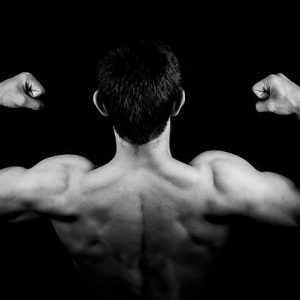 By Jana Taylor
By Jana Taylor
The human body contains over 650 muscles. They are everywhere and perform many vital jobs like pumping blood through your circulatory system or simply making it possible to walk. Some muscles you can control and some work involuntarily. You probably don’t give any of them a second thought, until you overwork one and it becomes sore (In that case, we’d certainly recommend you use Muscle Ice or Muscle Rescue to help you feel better).
All muscles are made of the same elastic, fibrous tissue that allows them to flex and stretch like a rubber band. Even though muscles are all composed of the same kind of tissue, there are three major types of muscles in your body: skeletal, cardiac and smooth.
Skeletal Muscles
These muscles are also referred to as striated muscles because they have a striped appearance due to the light and dark muscle fibers. These are the muscles that everyone is most familiar with not only because you can see them beneath the skin, but because they are the muscles that give you strength and let you move around.
Skeletal muscles are voluntary muscles, meaning you control when and how to move them. In most cases they are attached directly to your bones with tendons. Even your face has muscles running under the skin. These muscles are not attached to bone, but rather directly to the skin which allows you to change your expressions with just the slightest movement. And of course your entire tongue is a muscle, the only one that is attached at a single end. Without it, talking would be impossible, and eating would be very difficult.
Ever wonder how a muscle increases in size? After you exercise, your body repairs damaged muscle fibers by combining the muscle fibers together at the cellular level to form new muscle protein strands (also called myofibrils). These repaired myofibrils increase in thickness and quantity which makes muscles bigger. But, the flip side is that you can lose these myofibrils if you don’t keep exercising.
When muscles work harder than they’re used to or in a different way, it is believed that microscopic damage is being caused to the muscle fibers, resulting in muscle soreness or stiffness that you feel. Many people believe that an excess of lactic acid is the culprit, but actually it is delayed-onset muscle soreness (or DOMS) because it starts hours afterward, and peaks around two days after exercise.
Exactly how DOMS develops isn’t as well understood, but experts agree that people who have soreness are experiencing a muscle damage and rebuilding process. Proteins leave the injured cells while fluid and white blood cells rush in. As time goes on, the muscle cells are patched up and new cells are born. Soreness seems to be the result.
Cardiac Muscles
These muscles are in the heart (also called the myocardium). Cardiac muscles can contain up to 35 percent mitochondria (much more than skeletal muscles). The mitochondria provide energy (ATP) to your heart so that it does not need rest periods in the same way your other skeletal muscles do and can keep beating whether you are awake or asleep 24/7.
Even though the heart muscles function continually, you can keep the heart healthy with exercise just like your skeletal muscles. It’s been shown that exercise can reduce the risk of cardiovascular disease. Short bursts of intense exercise have been shown to be the optimal type for your heart, general health, weight loss, and overall fitness.
Smooth Muscles
Smooth muscles are layers of involuntary muscles that work even when you are not aware of them. These are the muscles that you cannot necessarily control. Examples of smooth muscles include the walls of hollow internal structures, like blood vessels, stomach intestines or the gallbladder, certain eye muscles that control your eye’s ability to focus, bladder muscles, and in women, the uterine muscles involved in childbirth.
Because most smooth muscles must function for long periods without rest, their power output is relatively low. And, because there is no conscious control when it comes to smooth (involuntary) muscles, direct exercise of these tissues is not possible, but it is important to keep these tissues healthy and working properly. This is done through a regimen of healthy nutrition, reducing stress and general exercise of the voluntary (skeletal) muscles that we can control.
…
 Jana Taylor is a staff writer for Peaceful Mountain.
Jana Taylor is a staff writer for Peaceful Mountain.

 Your Amazing Skin
Your Amazing Skin